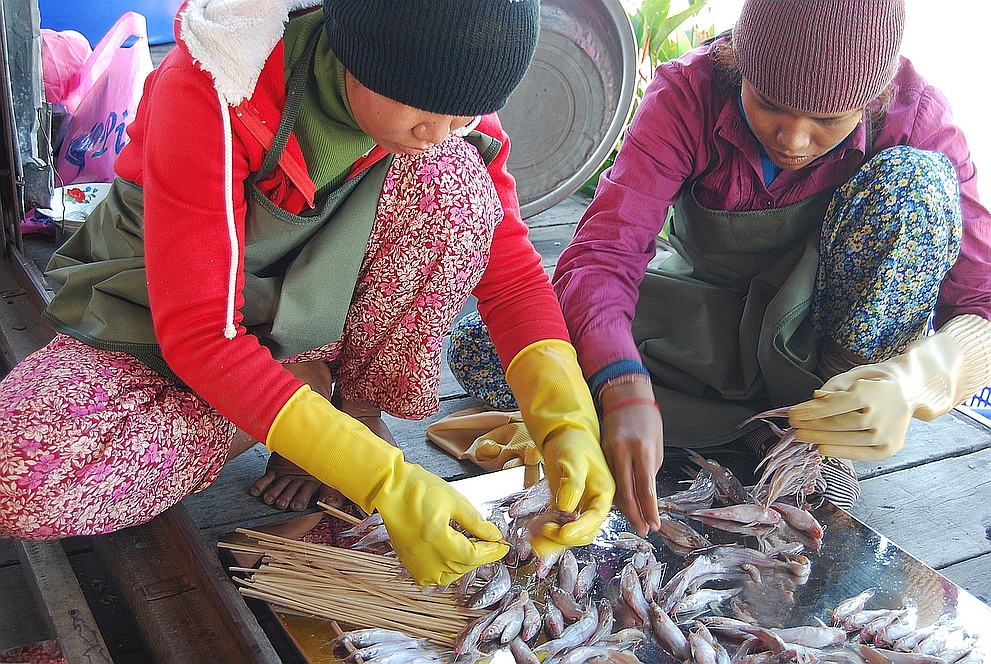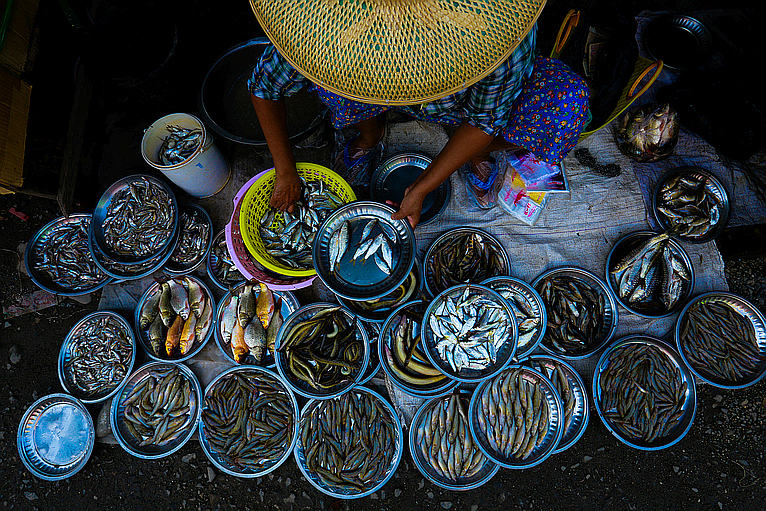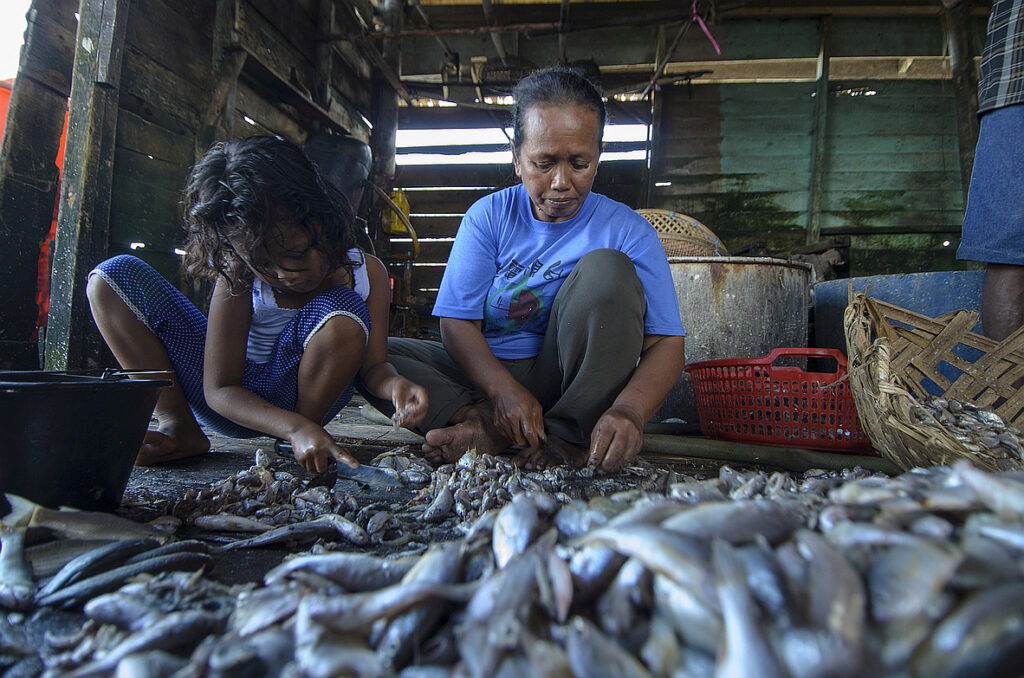The fishing industry is facing a reckoning.
Journalists and researchers in recent years have uncovered slavery, child labor and human trafficking on fishing vessels, spurring a global push to address human rights abuses on the high seas.
However, what happens after the fish are caught has remained largely hidden.

According to researchers, millions of onshore fish workers — predominantly women — spend long hours cleaning and packaging fish in factories, maintaining community fish farms and often filling low-paying positions throughout seafood supply chains around the world. And in these roles, they face a different — but equally egregious — suite of human rights abuses, the researchers write in a recent paper (Finkbeiner, Fitzpatrick and Yadao-Evans 2021).
In an interview, Conservation News spoke to the paper’s lead author, Conservation International scientist Elena Finkbeiner, about the hardships that women endure in the fishing industry — and the steps needed to address them.
Question: Fishing is widely considered a male-dominated industry. What jobs do women fill?
Answer: The best way to describe the fishing industry is “male-dominated but female-intensive.”
Men are typically seen on industrial fishing vessels, but that type of work accounts for just a fraction of jobs in the industry. Women fill 90 percent of land-based jobs — including managing local fish farms, working in seafood processing plants, marketing products and even collecting snails or crabs, which feed communities while fishers are at sea.

Women are the unseen backbone of seafood supply chains, supporting local food security and ensuring that fish are processed and packaged for sale at regional and national markets. Unfortunately, women are rarely chosen for leadership or managerial roles in seafood supply chains, meaning that they often do not have a voice in decisions, including working conditions and fair compensation. Our recent paper highlights how systemic discrimination and a lack of representation and recognition in the seafood industry worldwide makes women more vulnerable to abuse.
Q: What types of human rights abuses are women in the fisheries sector currently up against?
A: Sexual harassment and gender-based violence are hugely pervasive across many fishing communities — there are even accounts of women being forced to exchange sex for access to fish markets.
Lesser known yet extensive inequalities also persist in the essential roles that women play in fish processing factories. If a woman is able to find a job in this part of the industry, it’s likely that the position will be temporary and unsalaried, meaning that her job is not as secure and she will not qualify for benefits such as health insurance, childcare or a severance package if she is let go. Additionally, post-harvest female fish workers are often exposed to dangerous conditions in factories with poor ventilation, limited breaks and crowded facilities — which has been especially harmful during the COVID-19 pandemic because working in close quarters can increase the risk of transmission.
These abuses and inequities inhibit the ability of women to access more secure and better-paying positions in the fishing industry, further marginalizing their roles, and exacerbating vulnerabilities to external shocks such as public health crises and natural disasters.
Q: What needs to change for the fishing industry to address gender inequality?
A: The seafood sustainability movement has made significant strides toward tackling human rights abuses on the high seas, but these efforts must also include a greater focus on the rights of women and communities who participate in seafood supply chains onshore. Governments must invest more resources toward creating and applying policies to protect gender equity and developing social safeguards that reach women and small-scale fishing communities. For example, Costa Rica is an early adopter among countries striving to embed guidelines for sustainable, equitable and socially responsible small-scale fisheries into national law, with Ecuador and Peru closely following suit.

Seafood businesses — from producers and processors to suppliers and retailers — also have a responsibility to ensure that their policies and practices protect women from gender-based violence, promote gender equality and support fair wages throughout their supply chains. One way they can do this is by committing to follow the Monterey Framework for Social Responsibility, which is aimed at protecting human rights and improving food and livelihood security in the fishing industry.
A few of the recommendations outlined in the framework include providing equitable opportunities for all fish workers, improving environmental sustainability across production lines, and protecting human rights to ensure that seafood is sourced without harm to the people involved in producing, processing and distributing it.
- Kiley Price is the staff writer and news editor at Conservation International.
This article originally appeared in Conservation International’s blog “Conservation News.”
REFERENCE
Finkbeiner, Elena M., Juno Fitzpatrick, Whitney Yadao-Evans. 2021. A call for protection of women’s rights and economic, social, cultural (ESC) rights in seafood value chains. Marine Policy, 128 https://doi.org/10.1016/j.marpol.2021.104482
This entry was posted in: Concepts, Theory, Fisheries, Global, Value Chains, Women
